The AMD Ryzen Threadripper 3960X and 3970X Review: 24 and 32 Cores on 7nm
by Dr. Ian Cutress, Andrei Frumusanu & Gavin Bonshor on November 25, 2019 9:05 AM ESTGaming: Grand Theft Auto V
The highly anticipated iteration of the Grand Theft Auto franchise hit the shelves on April 14th 2015, with both AMD and NVIDIA in tow to help optimize the title. GTA doesn’t provide graphical presets, but opens up the options to users and extends the boundaries by pushing even the hardest systems to the limit using Rockstar’s Advanced Game Engine under DirectX 11. Whether the user is flying high in the mountains with long draw distances or dealing with assorted trash in the city, when cranked up to maximum it creates stunning visuals but hard work for both the CPU and the GPU.
For our test we have scripted a version of the in-game benchmark. The in-game benchmark consists of five scenarios: four short panning shots with varying lighting and weather effects, and a fifth action sequence that lasts around 90 seconds. We use only the final part of the benchmark, which combines a flight scene in a jet followed by an inner city drive-by through several intersections followed by ramming a tanker that explodes, causing other cars to explode as well. This is a mix of distance rendering followed by a detailed near-rendering action sequence, and the title thankfully spits out frame time data.
There are no presets for the graphics options on GTA, allowing the user to adjust options such as population density and distance scaling on sliders, but others such as texture/shadow/shader/water quality from Low to Very High. Other options include MSAA, soft shadows, post effects, shadow resolution and extended draw distance options. There is a handy option at the top which shows how much video memory the options are expected to consume, with obvious repercussions if a user requests more video memory than is present on the card (although there’s no obvious indication if you have a low end GPU with lots of GPU memory, like an R7 240 4GB).
All of our benchmark results can also be found in our benchmark engine, Bench.
| AnandTech | IGP | Low | Medium | High |
| Average FPS | 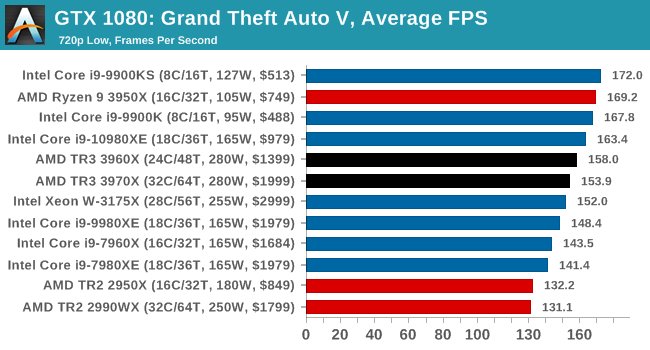 |
 |
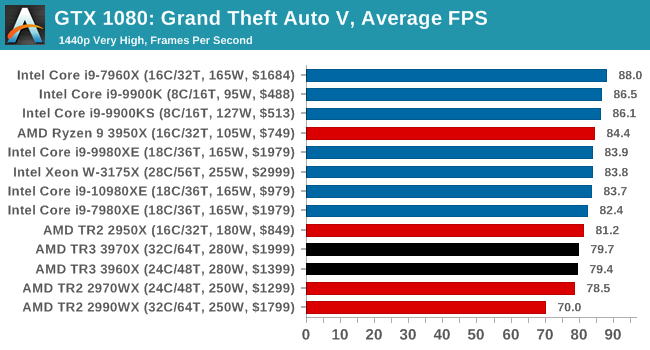 |
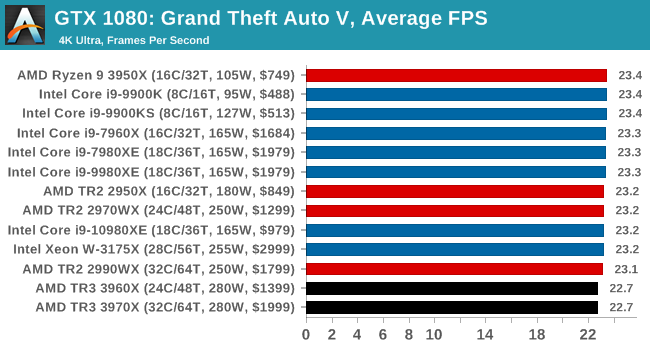 |
| 95th Percentile |  |
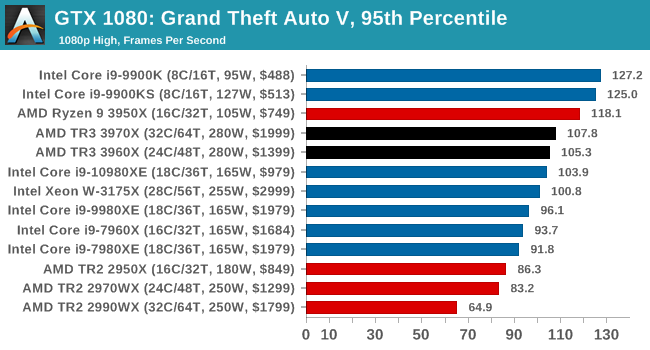 |
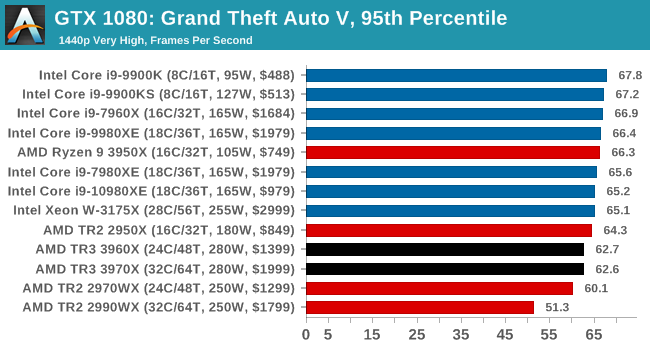 |
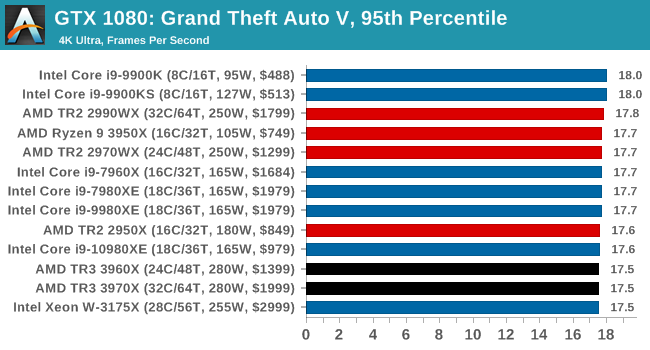 |


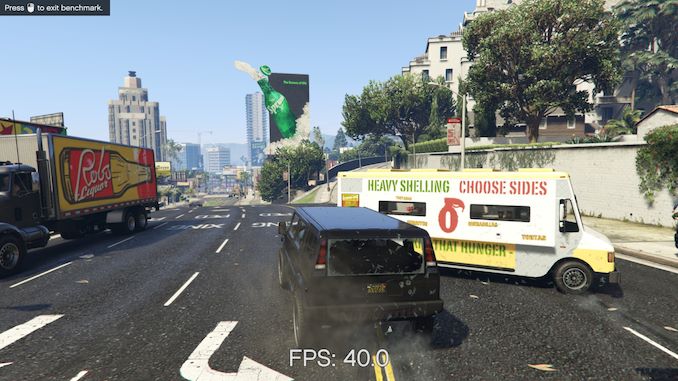









245 Comments
View All Comments
Railgun - Sunday, January 5, 2020 - link
So...at what point will these and other recent results end up in the Bench DB?JEmlay - Thursday, February 6, 2020 - link
I have a 9900K and 3970X side by side and my findings are much different. The 3970X destroys the 9900K in every way. Are you sure you're using the memory properly in the AMD machine? Make sure you're running at least 3600 with 1:1 FClock. Then out of nowhere an Intel 7960X destroys the AMD 3970X? No way.Janie Durham - Wednesday, May 20, 2020 - link
It's very <a href="https://www.anandtech.com/show/15044/the-amd-ryzen...jed22281 - Tuesday, June 2, 2020 - link
Excellent & exhaustive analysis, STILL, after all these years, I <3 AT :)Yohan3 - Sunday, January 3, 2021 - link
What are 0T,2T meaning?If I perform manual OC for the Threadripper 3970x, what maximum values I need put in for PPT,TDC, and EDC limits in a BIOS? (280 W ?)
Yohan3 - Sunday, January 3, 2021 - link
What are 0T,2T meaning?If I perform manual OC for the Threadripper 3970x, what maximum values I need put in for PPT,TDC, and EDC limits in a BIOS? (280 W ?)